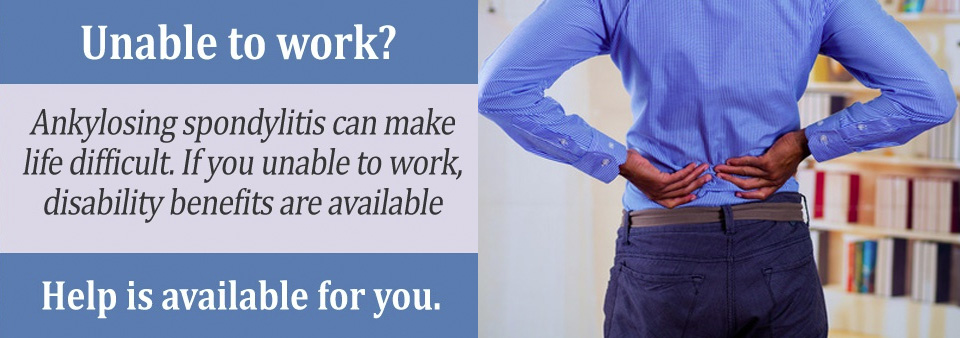A quarter of all Americans have some sort of disability that affects their enjoyment of life. A smaller number of people experience such debilitating conditions that they are unable to work, so they suffer financial hardship.
Ankylosing spondylitis is a progressive incurable disease that affects the spinal column, fusing individual vertebrae together so that the sufferer is often forced to bend over in pain.
Anyone who has ankylosing spondylitis may find that at some point they are unable to work or earn a living, despite treatment which reduces the intensity of the pain and symptoms.
Because the condition cannot be cured, the sufferer may be able to obtain a disability benefit from the Social Security Administration (SSA).
Financial Help with PTSD
Financial help in the form of disability benefits is available to those who have worked for long enough to have accumulated work credits through paying social security insurance payments in their payroll tax.
The number of work credits needed to obtain a social security disability insurance (SSSDI) benefit depends on one’s age when work is no longer possible or one expects to be unable to work for at least the next 12 months.
Because ankylosing spondylitis often develops in early adulthood, it may be possible that the sufferer has not acquired enough work credits to be eligible for a SSDI benefit. In this case, if both assets and income are low, it may be possible to obtain a benefit from the SSA through the supplemental security income (SSI) stream.
SSDI and SSI benefits are adjusted each year to take into account increases in the cost of living.
Retirement and Survivors’ Benefits
If you have reached retirement age (65) and have accumulated 40 work credits then you can obtain federal retirement benefits. These are paid for out of the payroll tax contributions you paid while you were employed.
Survivors’ benefits may be paid to any surviving family members if you die. The age at which you die determines how many work credits you would have needed to have accumulated for survivors’ benefits to be paid to your spouse, children or parents. You don’t need more than 40 work credits, but if you die younger, then the number of credits you might have needed is less.
Medicare Coverage
If you are receiving a disability benefit and are under 65 you may be able to receive Medicare cover. With a Medicare card you may then be able to access medical care such as doctor’s visits, hospital stays, medications and surgery. There is a 24 month waiting time while on a disability benefit before you can apply for Medicare.
Return to Work Incentives and the Ticket to Work Program
If you have not yet reached retirement age (65) and are keen to return to work despite your disability, the SSA offers an incentive in the form of the Ticket to Work Program. This is entirely voluntary and free and is designed to help those with a disability achieve greater financial independence.
The PASS Program
The PASS program is another SSA initiative that is designed to help those with disabilities find some sort of gainful employment which they can pursue which does not affect their disability yet enables them to reduce or eliminate their dependence on a disability benefit.
Additional Resources
- Permanent Restrictions Ankylosing Spondylitis
- Ankylosing Spondylitis and Social Security Disability
- Benefits of Applying for SSDI with Ankylosing Spondylitis
- Denied Disability Benefits With Ankylosing Spondylitis
- 10 Best Exercises & Other Tips for Managing Ankylosing Spondylitis
- Are Social Security Disability Benefits Worth It? Here's Everything You Need To Know
